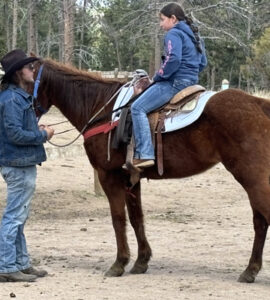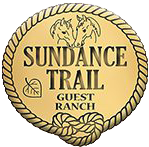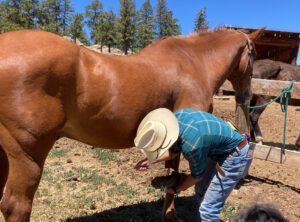 Welcome to Sundance Trail Guest Ranch’s comprehensive guide on horseback riding safety. We are dedicated to ensuring that your equestrian adventures are as safe and enjoyable as possible. By following these safety tips and staying informed, you can enjoy the rewarding experience of horseback riding with confidence and peace of mind. Happy trails from all of us at Sundance Trail Guest Ranch!
Welcome to Sundance Trail Guest Ranch’s comprehensive guide on horseback riding safety. We are dedicated to ensuring that your equestrian adventures are as safe and enjoyable as possible. By following these safety tips and staying informed, you can enjoy the rewarding experience of horseback riding with confidence and peace of mind. Happy trails from all of us at Sundance Trail Guest Ranch!
1. Essential Horseback Riding Safety Gear for Every Rider
When it comes to horseback riding, having the right safety gear is crucial. The most important piece of equipment is a properly fitted helmet, which protects your head in case of falls or accidents. Riding boots with a small heel prevent your feet from slipping through the stirrups. Gloves improve your grip on the reins, while a safety vest can provide additional protection for your torso. Don’t forget about well-fitting, comfortable clothing that allows for a full range of motion and doesn’t have any loose parts that could get caught. Remember, investing in quality safety gear is investing in your well-being.
2. Pre-Ride Safety Checklist
Before you mount your horse, it’s essential to perform a pre-ride safety check. Start by inspecting your tack for any signs of wear or damage. Check that the saddle is properly fitted and secured, and that the girth or cinch is tight enough. Ensure that your stirrups are adjusted to the correct length. Next, give your horse a thorough grooming to check for any injuries or abnormalities. Lastly, do a quick mental review of your planned ride, considering the weather, terrain, and any potential hazards. This simple routine can prevent accidents and ensure a smooth ride.
3. Understanding Horse Behavior
Understanding your horse’s behavior is key to safe riding. Horses are prey animals and can be easily startled by sudden movements or loud noises. Learn to recognize signs of discomfort or fear, such as pinned ears, swishing tails, or stomping hooves. Building a strong bond through regular interaction and positive reinforcement helps your horse feel more secure and responsive. Always approach your horse calmly and confidently, and take the time to understand their unique personality and quirks. A well-understood horse is a safer horse.
4. Horseback Riding Safety Techniques for Beginners
For new riders, mastering basic riding techniques is essential for safety. Start with mounting and dismounting properly—use a mounting block if necessary to reduce strain on both you and your horse. Once in the saddle, maintain a balanced posture with your heels down and eyes forward. Learn to use the reins gently and effectively to communicate with your horse. Practice stopping, turning, and walking before advancing to faster gaits. Riding in a controlled environment with an experienced instructor can greatly enhance your learning experience and safety.
5. Advanced Riding Safety Tips
Experienced riders face different challenges that require advanced safety techniques. When riding at higher speeds or over challenging terrains, it’s crucial to maintain a secure seat and stay in tune with your horse’s movements. Develop a strong core and balanced posture to handle sudden shifts. Learn emergency stops and one-rein stops to quickly regain control in precarious situations. Always stay aware of your surroundings and anticipate potential hazards. Remember, even seasoned riders can benefit from regular lessons to refine their skills and stay sharp.
6. Trail Riding Safety: What You Need to Know
Trail riding offers a wonderful opportunity to explore nature but comes with unique risks. Before setting out, inform someone of your route and expected return time. Carry a basic first aid kit, a map, and a fully charged phone. Stay on marked trails and be mindful of the terrain—watch for obstacles like rocks, roots, and low-hanging branches. If you encounter wildlife, remain calm and give them space. Always ride with a buddy when possible, and if not, consider joining a trail riding group. Preparation and vigilance are your best allies on the trail.
7. Emergency Preparedness on Horseback
Accidents can happen, even with the best precautions. Being prepared for emergencies can make a critical difference. Carry a well-stocked first aid kit tailored for both humans and horses. Learn basic first aid skills, including how to handle minor injuries, stop bleeding, and splint fractures. Know your location at all times and be able to describe it accurately if you need to call for help. Practice emergency dismounts and have a plan for safely handling an injured horse. Preparation helps you stay calm and effective in crisis situations.
 8. Horse Health and Safety
8. Horse Health and Safety
A healthy horse is a safe horse. Regularly check your horse for signs of good health: bright eyes, a shiny coat, and a steady gait. Schedule routine vet check-ups, vaccinations, and dental care. Ensure your horse’s diet is balanced and meets their nutritional needs. Monitor their weight and adjust feeding as necessary. Keeping your horse’s living environment clean and safe, free from hazards, also reduces the risk of injury. Prioritizing your horse’s health ensures they are in top condition for riding.
9. Weather-Related Riding Safety
Weather conditions can significantly impact riding safety. In hot weather, ride during cooler parts of the day and ensure your horse stays hydrated. In cold weather, dress in layers and use a quarter sheet to keep your horse warm. Wet or icy conditions can make trails slippery; consider postponing rides if the footing is unsafe. Windy conditions can spook horses, so ride in sheltered areas. Always check the weather forecast before heading out and adjust your plans accordingly to ensure safety.
10. The Importance of Proper Training
Proper training is essential for both horse and rider safety. Invest in professional riding lessons to learn correct techniques and build confidence. Consistent training helps your horse understand commands and behave predictably. Focus on developing a strong bond through regular, positive interactions. Addressing behavioral issues early through training can prevent accidents. Remember, continuous learning and improvement are key components of safe and successful riding.
Stay safe, and happy riding!
More Dude Ranch Horseback Riding and Safety Articles from our Collection:
Ready to Try Horseback Riding?
At Sundance Trail Guest Ranch, we’re passionate about guiding new riders on their journey to horseback riding. Many of our beginners leave with a lasting bond with their new equine friends and an eagerness to come back for more. Join us and experience the joy of learning to ride safely in a supportive and friendly environment!

 8. Horse Health and Safety
8. Horse Health and Safety